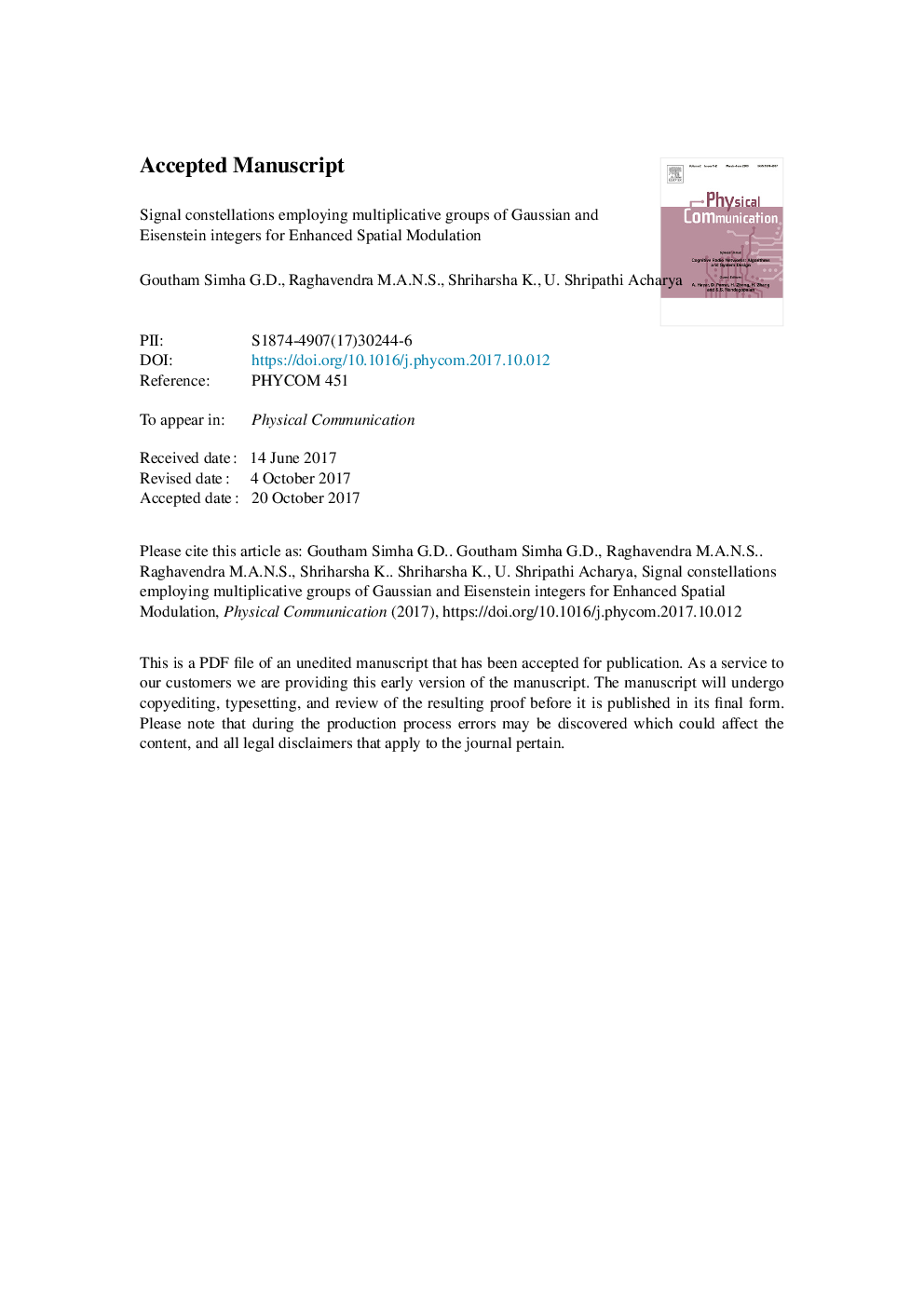| کد مقاله | کد نشریه | سال انتشار | مقاله انگلیسی | نسخه تمام متن |
|---|---|---|---|---|
| 6889323 | 1445110 | 2017 | 26 صفحه PDF | دانلود رایگان |
عنوان انگلیسی مقاله ISI
Signal constellations employing multiplicative groups of Gaussian and Eisenstein integers for Enhanced Spatial Modulation
دانلود مقاله + سفارش ترجمه
دانلود مقاله ISI انگلیسی
رایگان برای ایرانیان
موضوعات مرتبط
مهندسی و علوم پایه
مهندسی کامپیوتر
شبکه های کامپیوتری و ارتباطات
پیش نمایش صفحه اول مقاله

چکیده انگلیسی
In this paper, we propose two new signal constellation designs employing Gaussian and Eisenstein Integers for Enhanced Spatial Modulation (ESM). ESM is a novel technique which was propounded by Cheng et al. The advantage of ESM over other Spatial Modulation (SM) schemes lies in its ability to enhance spectral efficiency while keeping the energy efficiency intact. This is done by activating either one or two antennas judiciously depending upon the required trade-off. In ESM, information radiated from the antennas depends upon index of the active transmit antenna combination(s) and also on the set of constellation points chosen, which may include points from multiple constellations. In this paper, we propose signal constellations based on multiplicative groups of Gaussian and Eisenstein integers. The set comprising of Gaussian and Eisenstein integers serves as primary and secondary constellation points for Gaussian Enhanced Spatial Modulation (GESM) scheme. The secondary constellation points are deduced from a single geometric interpolation from the primary constellation points. The Monte Carlo simulation results indicate that the proposed nonuniform constellations achieve impressive SNR gains compared to conventional constellation points used in the design of ESM. This new design has been described for MIMO employing 4Â ÃÂ 4 and 8Â ÃÂ 8 antenna configurations with only two active antennas. Furthermore, a closed form expression for the pairwise error probability (PEP) for the GESM scheme has been deduced. The PEP is utilized to determine the upper bound on the average bit error probability (ABEP). Our simulations indicate that the proposed GESM from Gaussian and Eisenstein integers scheme outperforms all the other variants of SM including conventional ESM by at least 2.5 dB at an average bit error ratio (ABER) of 10â5. Close correspondence between the theoretical analysis and the Monte Carlo simulation results are observed.
ناشر
Database: Elsevier - ScienceDirect (ساینس دایرکت)
Journal: Physical Communication - Volume 25, Part 2, December 2017, Pages 546-554
Journal: Physical Communication - Volume 25, Part 2, December 2017, Pages 546-554
نویسندگان
Goutham Simha G.D., Raghavendra M.A.N.S., Shriharsha K, U. Shripathi Acharya,